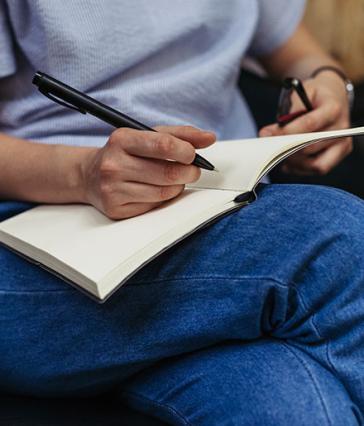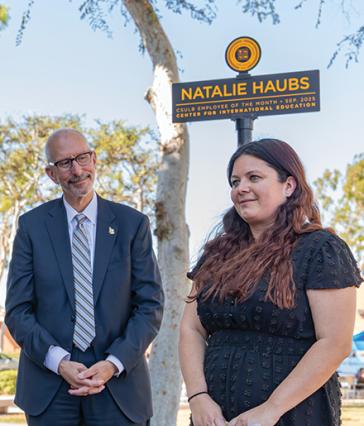Science exhibits, Shark Lab offer young minds the thrill of discovery
Four-year-old Aurelio Vidrio has a plastic putty knife in his hand and is hacking away at a small brick of compacted sand. Somewhere inside the brick is an actual fossil, millions of years old, and Aurelio is determined to find it. His downward thrusts are strong — and not particularly strategic.
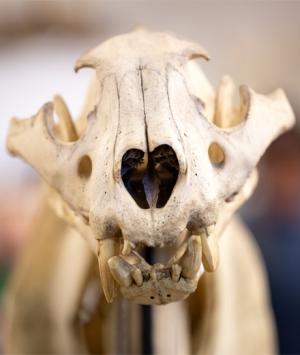
He’s only 4, after all.
When the reddish tooth begins to reveal itself, CSULB geology grad student Sara Olson — who is overseeing these miniature excavations in the basement of the Hall of Science — lowers herself to Aurelio’s level and suggests that it might be time to use the toothbrush.
Within seconds, the boy has clasped the tooth between his fingers and identified it from what looks like a police lineup of fossil teeth on a laminated card.
Suddenly, his eyes go wide and his body activates.
“A mososaurus tooth!” Aurelio exclaims with perfect pronunciation, as though the extinct marine reptile is a household name. “I got a mososaurus tooth!”
Olson laughs. “That,” she says. “That is the perfect reaction.”
More than 2,700 people — 900 more than last year — visited Cal State Long Beach on Saturday for the College of Natural Sciences and Mathematics’ annual open house. Dubbed “Sharks at the Beach and Science in the Hall,” the community event showcased the college’s research and achievements while engaging children in educational activities — including the paleontology dig, which was organized by the Earth Science Department.
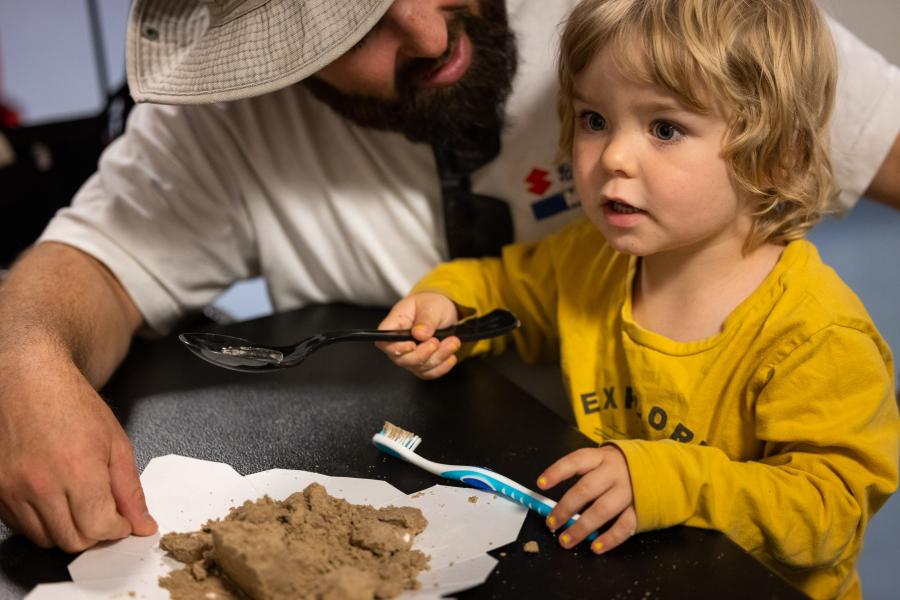
The open house drew a record crowd. Amid the din of laughter and chatter filling the Hall of Science, undergrads and masters’ students, along with faculty and staff, fielded hundreds of questions from children of all ages, many of them natural explorers.
Back at the fossil table, Olson tells Aurelio he gets to take the 70-million-year-old tooth home. It looks as though his eyes might just pop out of his skull. “We get to keep it?” he screeches.
With his excavation complete, Aurelio repeats a phrase he’s been telling his mom for months: “I want to be a shark scientist,” he says.
He has come to the right place.
Not only did CSULB's Shark Lab offer a range of exhibits, so, too, did other groundbreaking science labs and departments.
Here’s a look at 5 CSULB research labs that took center stage Saturday.

Botany Lab
Run by: Botanical curator Brian Thorson
Why it matters: The Botany Lab consists of five greenhouses, including three on the roof of the Hall of Science. Several faculty members use it for research, including Christine Whitcraft, who runs the CSULB Wetlands Ecology Lab, and Amanda Fisher, curator of the CSULB Herbarium in the Department of Biological Sciences.
On display at the event: Dozens of plants, each rarer and more bizarre than the next. Thorson is known for raising famously hard-to-grow plants, the most expensive of which is worth about $15,000.
Fun fact: CSULB’s corpse flower, Phil, blooms every so often, bringing with it the smell and look of rotting flesh. “It literally smells like carrion,” Thorson said. “You can’t stand next to it for more than a minute.”
Highlight of the day: Getting to feel sensitive plants, which recoil from touch, and carnivorous plants, including the Venus flytrap. Carnivorous plants can capture and consume insects and occasionally small vertebrates. Yes, really.
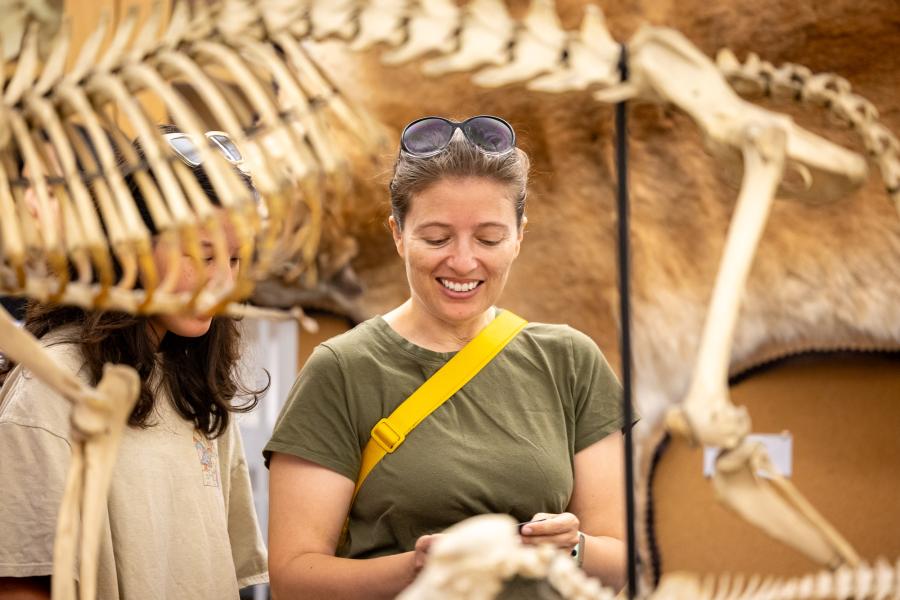
Mammal Lab
Run by: Associate Professor Ted Stankowich
Why it matters: An expert on predator-prey interactions, Stankowich is known for his research into the behavior of skunks and coyotes, as well as the evolution of animals with defense weaponry — including body armor, horns and spines.In addition to running the Mammal Lab, he manages the college's collection of nearly 40,000 animal specimens.
On display at the event: Thousands of pelts, skins, skeletons, skulls and preserved animal bodies lined long tables, while a screen projected images from more than 40 wildlife cameras used to study the effects of human, urbanization, fires and agriculture on wildlife.
Fun fact: Stankowich receives animal carcasses from the San Diego Zoo, as well as illegally trafficked items — such as tusks — seized by the U.S. Fish and Wildlife Service. Those that can’t be used or kept in the museum collections are passed on to other universities.
Highlight of the day: That depends on who you ask. For 10-year-old Cora Dsouza, who brought her stuffed bear to the event, it was the grizzly and polar bear skulls that won the day.
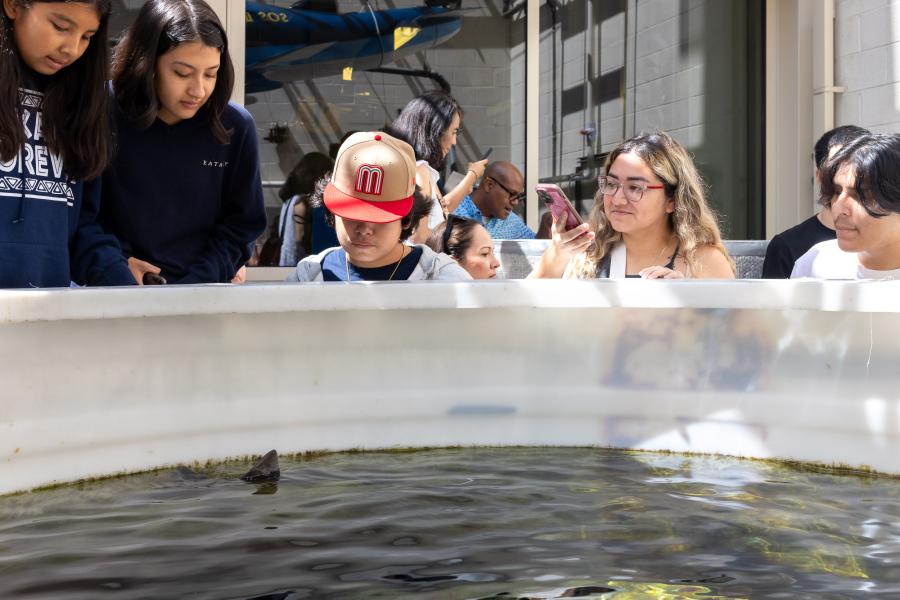
Shark Lab
Run by: Professor Chris Lowe
Why it matters: CSULB’s world-renowned Shark Lab has been studying shark behavior, ecology and physiology for nearly 60 years, 27 of it under Lowe’s tutelage. Recently, the lab has been using drones and DNA sequencing to track, monitor and study sharks.
On display at the event: Drone footage, tracking devices, a Shark Shack, shark jaws, a “Sharks and Crafts” room and — of course — plenty of live sharks in tanks.
Fun fact: Lowe and his grad students are interviewed nearly every time sharks make headlines. Their message: Sharks are way more fascinating than they are dangerous.
Highlight of the day: By closing time, more than 1,000 people had taken the guided Shark Lab tour, with 75 more still lined up and patiently waiting their turn. In the end, no one was turned away.
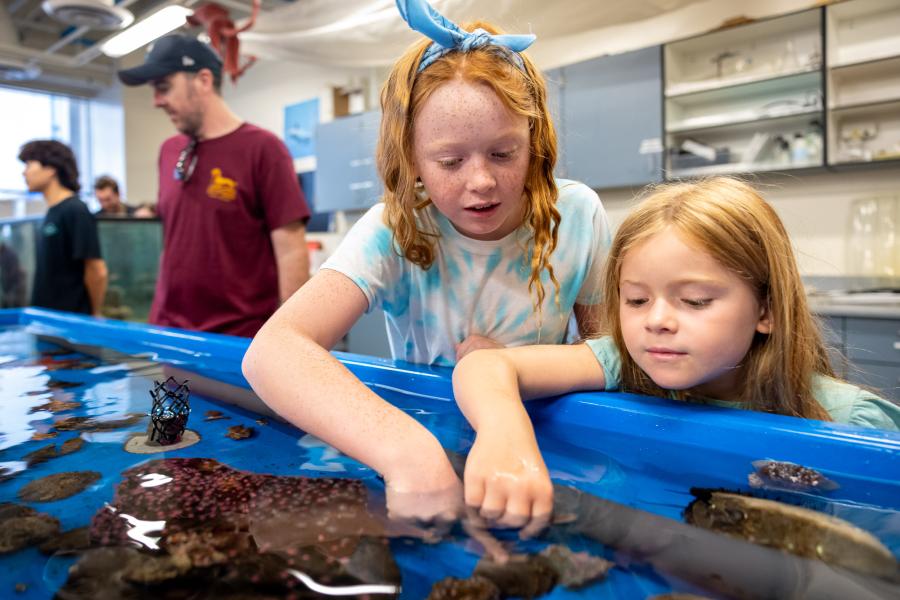
Stingray and Butterfly Biomechanics (STABB) Lab
Run by: Lecturer Ben Perlman
Why it matters: The lab researches stingrays, testing factors like foot size on sting likelihood, and conducting various experiments to understand ray behavior. Despite sharks' notoriety, stingrays pose a greater risk to humans, with tens of thousands of injuries annually compared to 57 shark attacks in 2022. (Although butterflies also are studied in the STABB Lab, Perlman is solely focused on stingrays at the moment.)
On display at the event: Posters of stingray behavior and the tools used for research, including three decoy “zombie” feet — one a relic from a Halloween store and two newer ones made with a 3D printer — helped explain how and why rays strike. Children also got to check out live rays in the Marine Lab, which also featured a touch tank.
Fun fact: Perlman was absent from the event because he was on Catalina Island with a group of students, conducting ant and mammal surveys.
Highlight of the day: The zombie feet, hands-down.
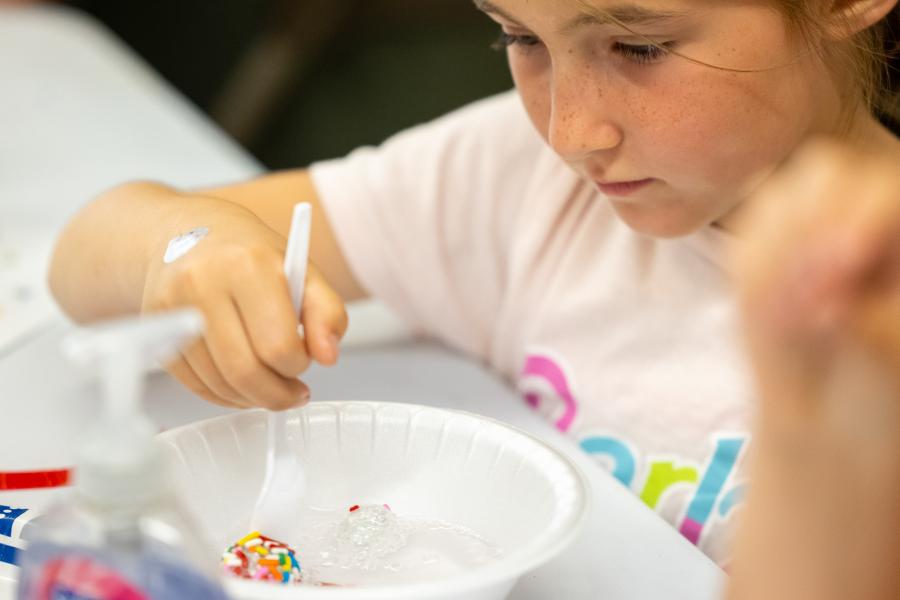
Virology Lab
Run by: Assistant Professor Peter Ramirez
Why it matters: Still relatively new, researchers in the Virology Lab study the interplay between viruses and host immune responses, and look to develop potential treatments.
On display at the event: Ramirez led children in making mock “viruses” to observe how they would respond in soapy water. Each virus was a ball of tinfoil wrapped in two-sided tape. One of them was also smeared with butter, which symbolized the lipid layer around “enveloped” viruses, such as SARS-CoV-2. Both balls then were rolled in candy sprinkles — which symbolized proteins. When dunked in the soapy water, the sprinkles dropped off only the enveloped viruses — illustrating how soap can insert itself into the fat and pull the virus apart. “Imagine — just by washing our hands” Ramirez said, “we can destroy viruses like the virus that causes COVID-19.”
Fun fact: Viruses are so tiny they make the width of a human hair look as tall as a mountain. And there are so many of them in the world’s oceans alone — 10 million viruses per milliliter of seawater — that, if stacked, they would extend 200 million light years in space.
Highlight of the day: Watching the smaller kids try to keep themselves from eating the candy sprinkles off their viruses.














